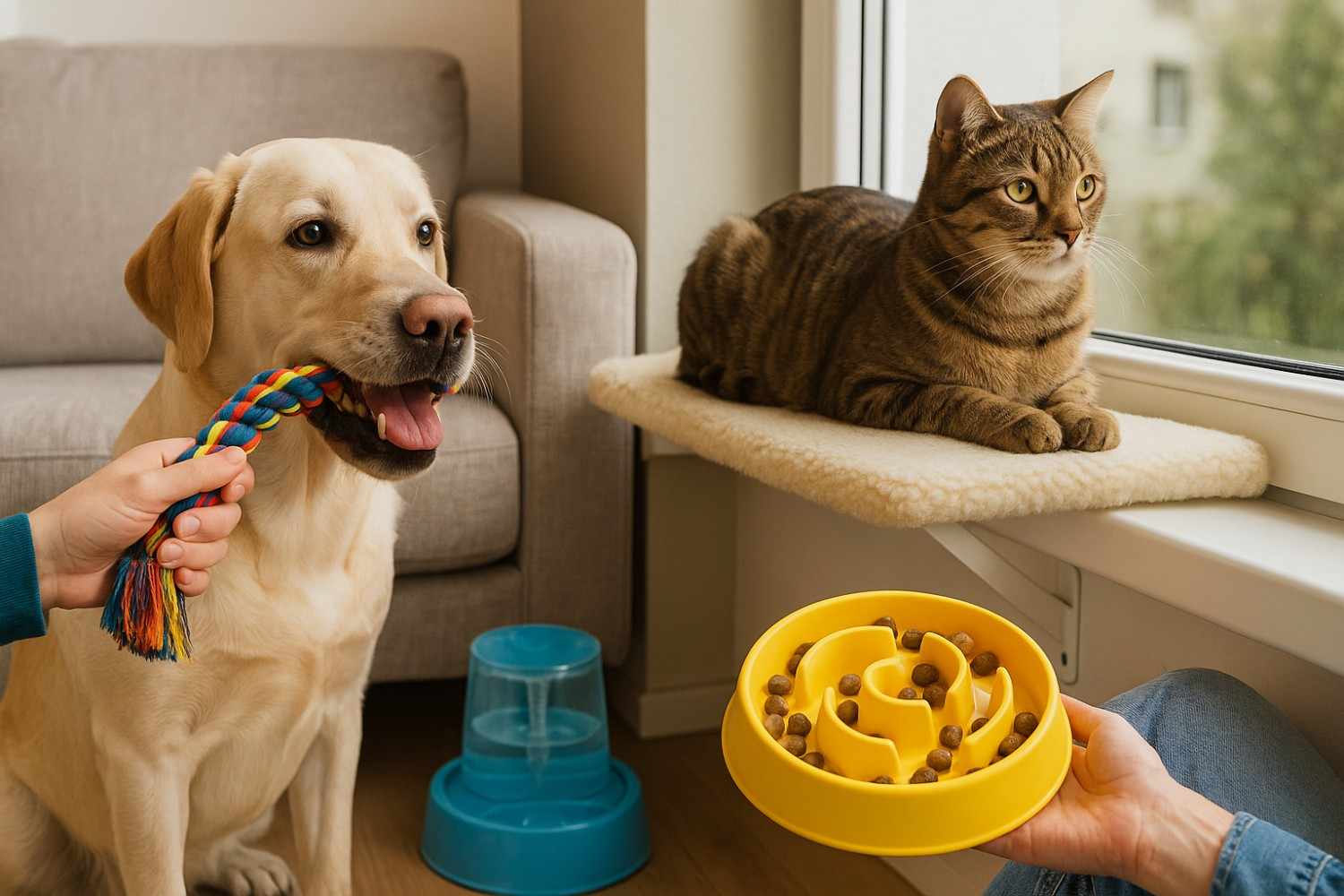Simple hacks can significantly improve the lives of pets, ensuring their comfort, safety, and happiness in any home. From easy DIY solutions to smart daily routines, small adjustments can address common pet challenges and foster a harmonious environment for both pets and owners. Incorporating these practical strategies not only saves time and money, but also enhances the well-being and bond shared with furry family members.
1. Create a Pet Feeding Station
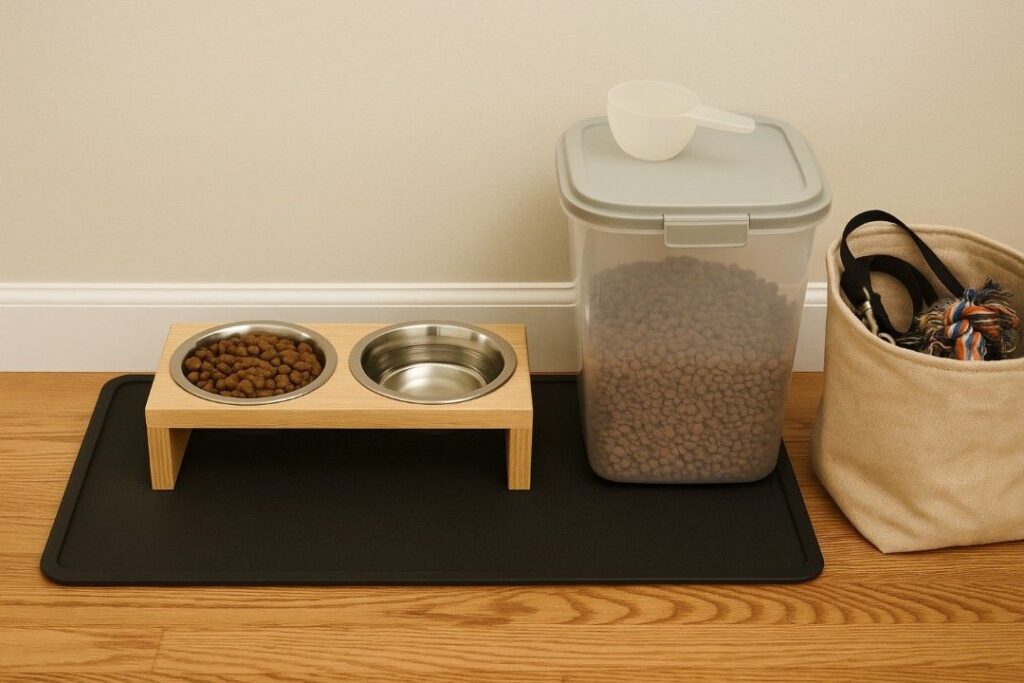
Designating a specific area as a pet feeding station helps keep food, water, and supplies organized and accessible. Using a non-slip mat under food and water bowls prevents spills and protects floors. Elevated feeders can benefit larger dogs or senior pets with joint issues. Storage bins nearby keep kibble and treats fresh and easily accessible.
For cats, consider raised dishes to minimize whisker fatigue. Placing the station in a quiet corner reduces stress during mealtimes, especially in multi-pet households. Keeping the feeding area tidy with easy-to-clean surfaces ensures better hygiene and less mess for everyone. This small change makes daily routines more efficient and your pet’s mealtimes more comfortable.
2. DIY Puzzle Feeders for Mental Stimulation
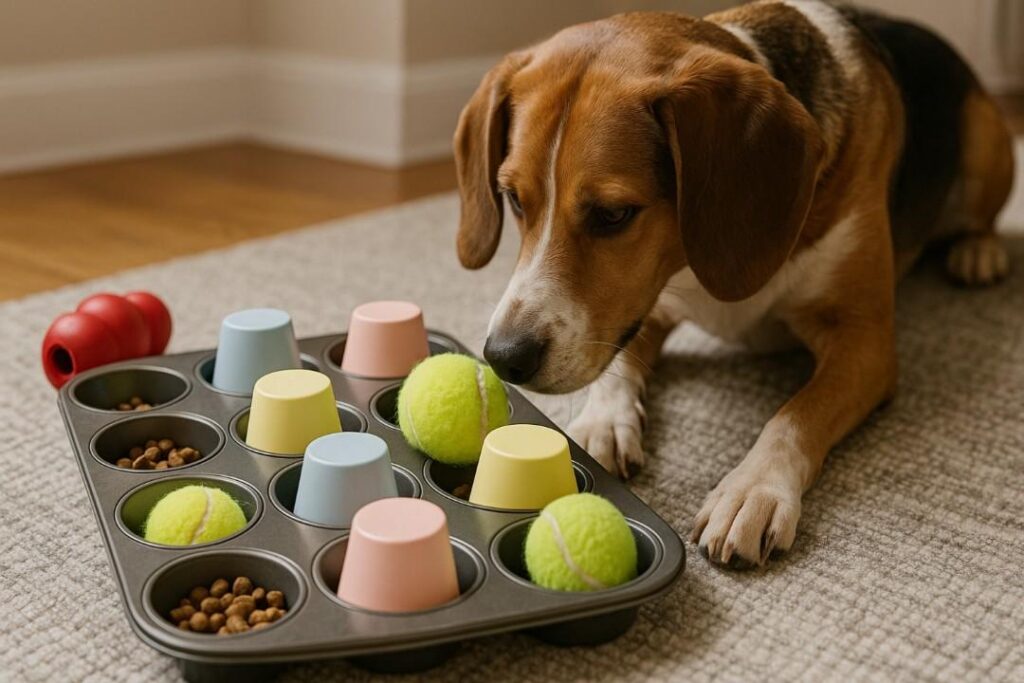
Mental stimulation is just as important as physical exercise for pets. DIY puzzle feeders, like stuffing treats into a Kong or hiding kibble in muffin tins, challenge pets to problem-solve while eating. These simple projects slow down fast eaters and curb boredom-driven behaviors such as chewing or excessive barking.
You can make easy puzzle toys with household items—try a rolled towel with treats tucked inside or a cardboard box maze for cats. Rotating different puzzle feeders keeps the activity novel and engaging, helping prevent anxiety and destructive habits.
3. Safe Spaces for Rest and Comfort
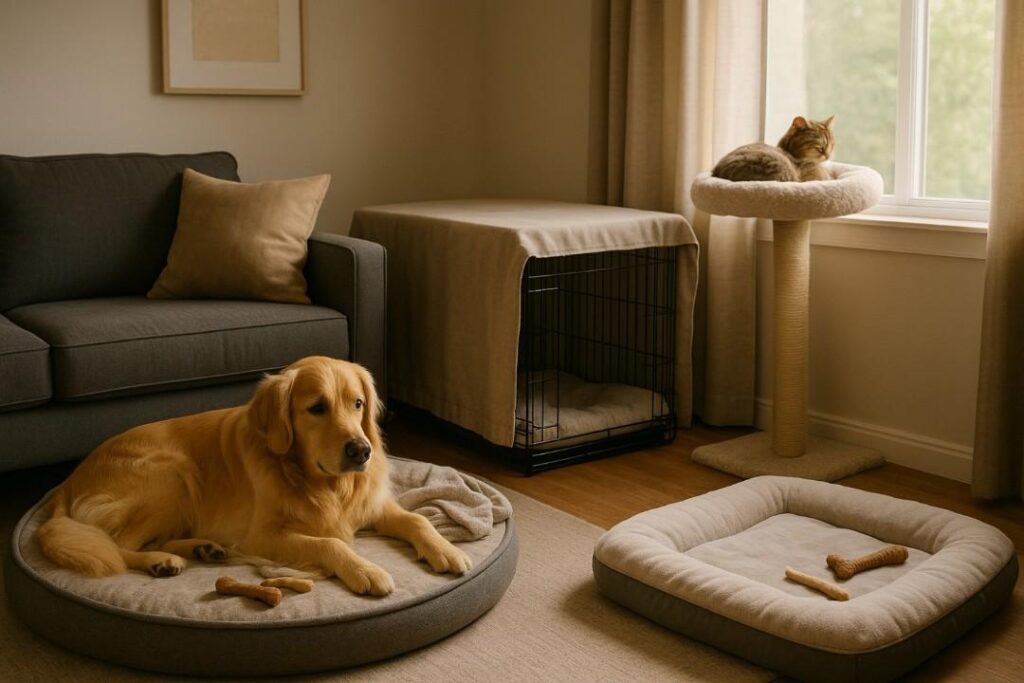
Providing a designated safe space, such as a cozy crate, bed, or quiet room, gives pets a secure retreat when they need downtime. Soft bedding, familiar toys, and low lighting create a calming environment, which is especially beneficial during loud events like thunderstorms or fireworks.
Cats enjoy enclosed areas or elevated perches, while dogs may prefer crates covered with a blanket for added privacy. Introducing a safe space early helps pets self-soothe and reduces stress in multi-pet homes or busy households. Regularly cleaning and refreshing the space maintains hygiene and comfort.
4. DIY Pet Gates and Barriers
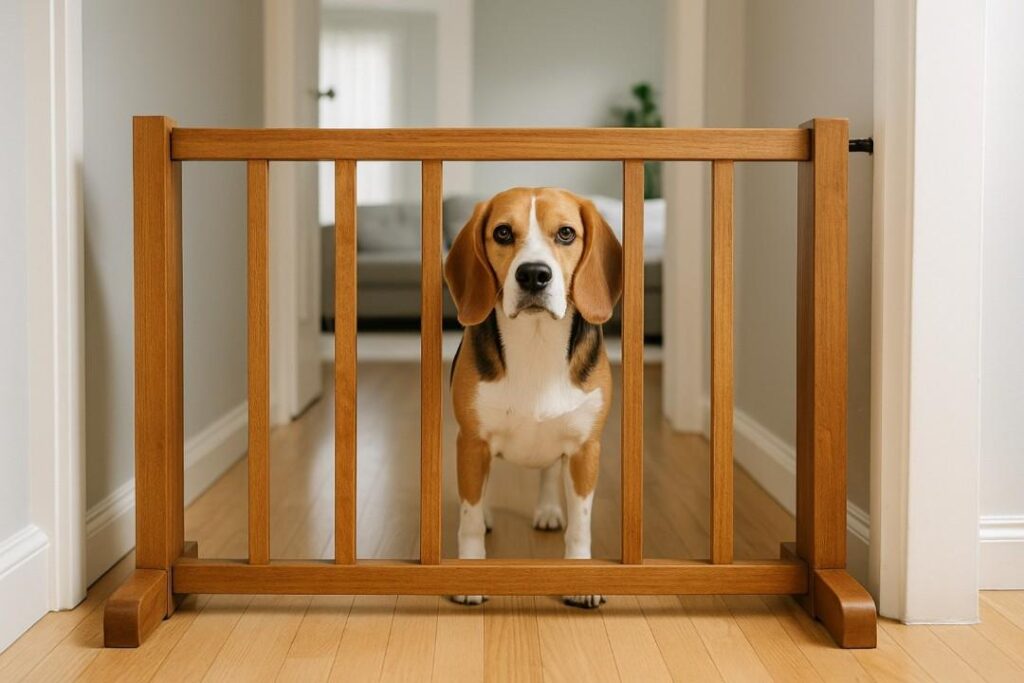
Managing your pet’s access to different areas can be easy and affordable with homemade gates or barriers. Simple solutions include using baby gates, tension rods with curtains, or repurposed furniture to block off restricted zones. This is particularly useful for keeping pets out of the kitchen, off the stairs, or away from children’s play areas.
Custom barriers can be tailored to your pet’s size and agility level, ensuring safety without sacrificing your home’s style. Consistently enforcing boundaries helps with training and prevents accidents or damage to sensitive areas.
5. Easy-to-Clean Bedding Solutions
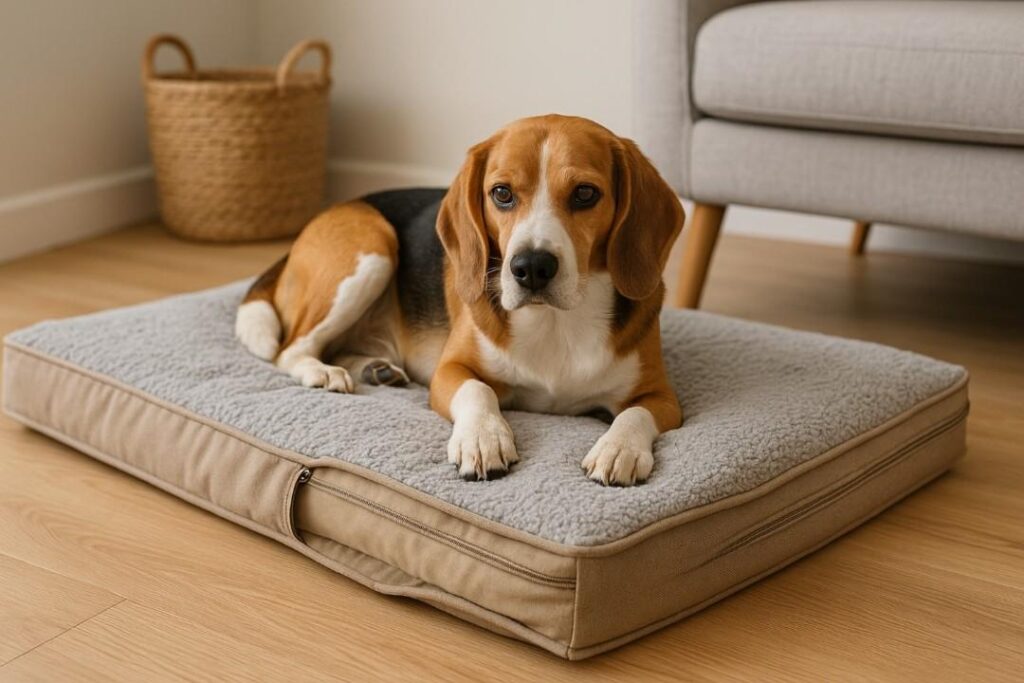
Opting for machine-washable pet beds and blankets simplifies cleaning and keeps your pet’s area fresh. Removable, waterproof covers protect against accidents and odors, extending the lifespan of bedding. For extra convenience, layer old towels or fleece throws for quick swaps during busy weeks.
Elevated cots are another low-maintenance option, keeping pets cool and reducing the buildup of hair and dander. Regular laundering supports your pet’s health by minimizing allergens and pests like fleas. Quick-clean surfaces are especially important for pets with allergies or sensitive skin.
6. DIY Pet Enrichment Gardens
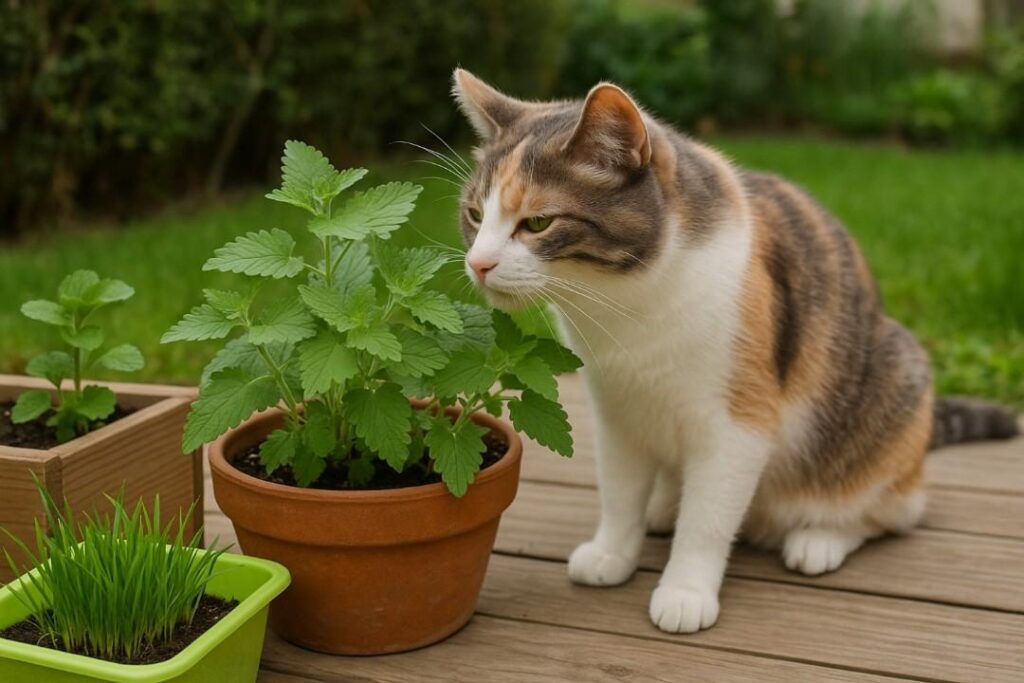
Creating a small indoor or outdoor enrichment garden allows pets to safely experience new scents, textures, and tastes. Grow pet-friendly herbs like catnip, mint, or wheatgrass for cats, and safe vegetables like carrots or parsley for dogs.
Placing pots at different heights or adding digging boxes offers mental and physical stimulation, helping to prevent boredom. Always verify plant safety before introducing anything new. Even a windowsill garden can enrich indoor pets’ lives and encourage healthy natural behaviors like sniffing, foraging, or gentle nibbling.
7. Homemade Cooling Mats for Hot Days
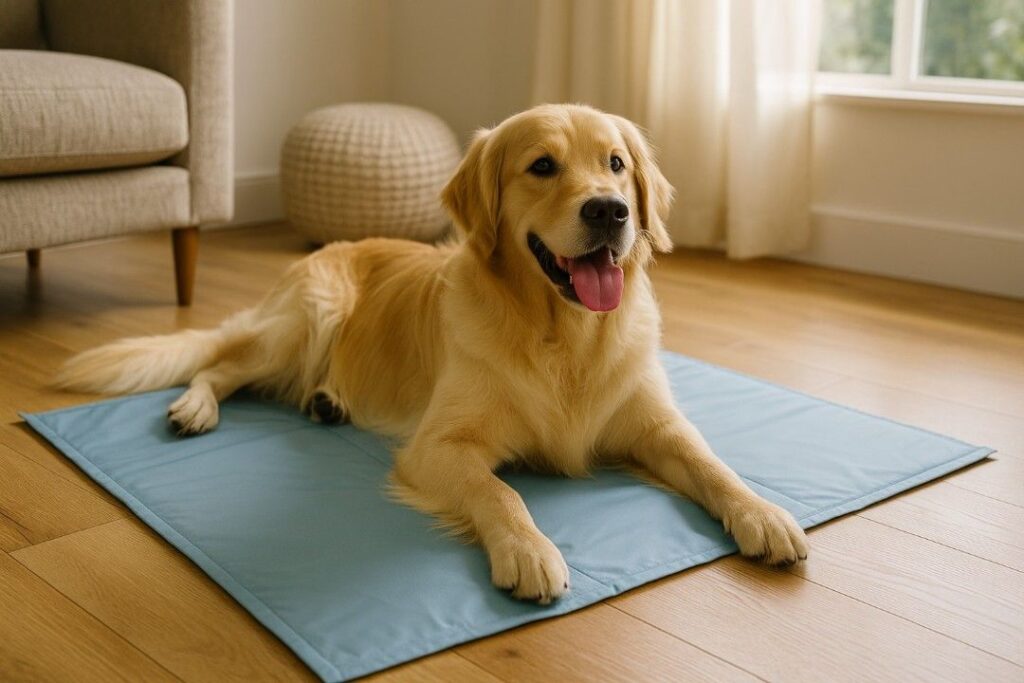
Keeping pets cool during hot weather is essential. A simple hack is to create homemade cooling mats by freezing water bottles and placing them under your pet’s bed or blanket. Alternatively, use damp towels chilled in the fridge. For added comfort, provide shaded areas and always ensure fresh water is available.
Cooling mats help regulate body temperature, especially for breeds prone to heat stress or flat-faced animals like Bulldogs and Persians. This cost-effective solution can prevent overheating and heatstroke during summer months.
8. Pet-Friendly Cleaning Solutions
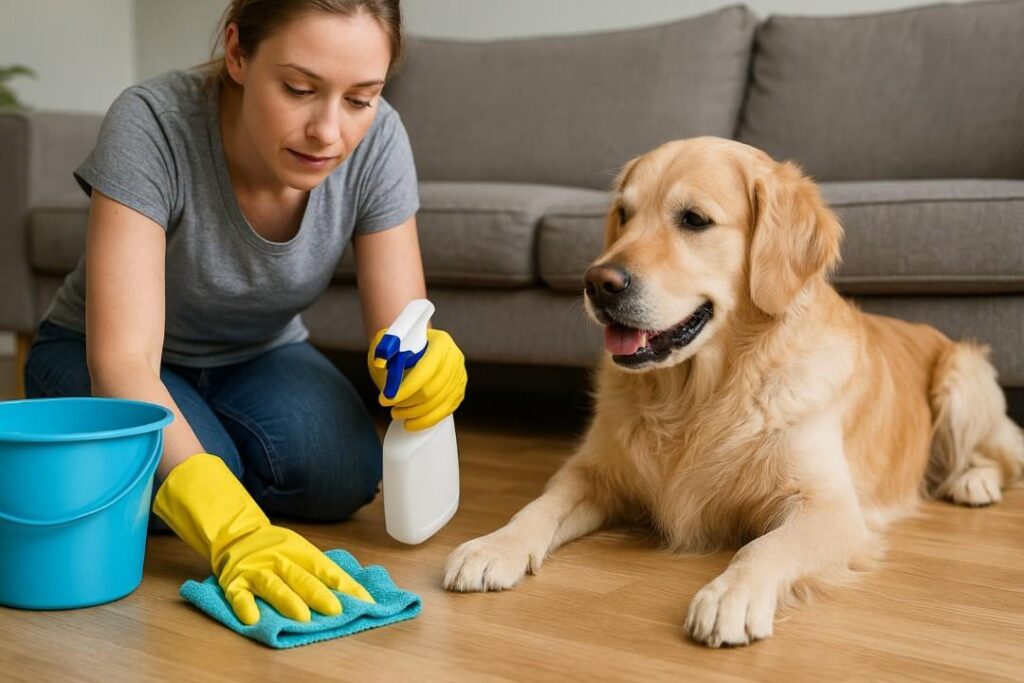
Many standard cleaning products contain chemicals harmful to pets. Switching to pet-safe alternatives like diluted white vinegar, baking soda, or enzyme cleaners keeps your home sanitary without risking your animal’s health. These natural options effectively tackle stains, odors, and pet accidents while being gentle on surfaces.
Always check product labels for toxicity warnings and keep cleaning supplies out of reach. Using washable mop heads and microfiber cloths further reduces allergens and fur buildup. Safe cleaning routines contribute to a healthier environment for both pets and their owners.
9. DIY Pet First Aid Kit
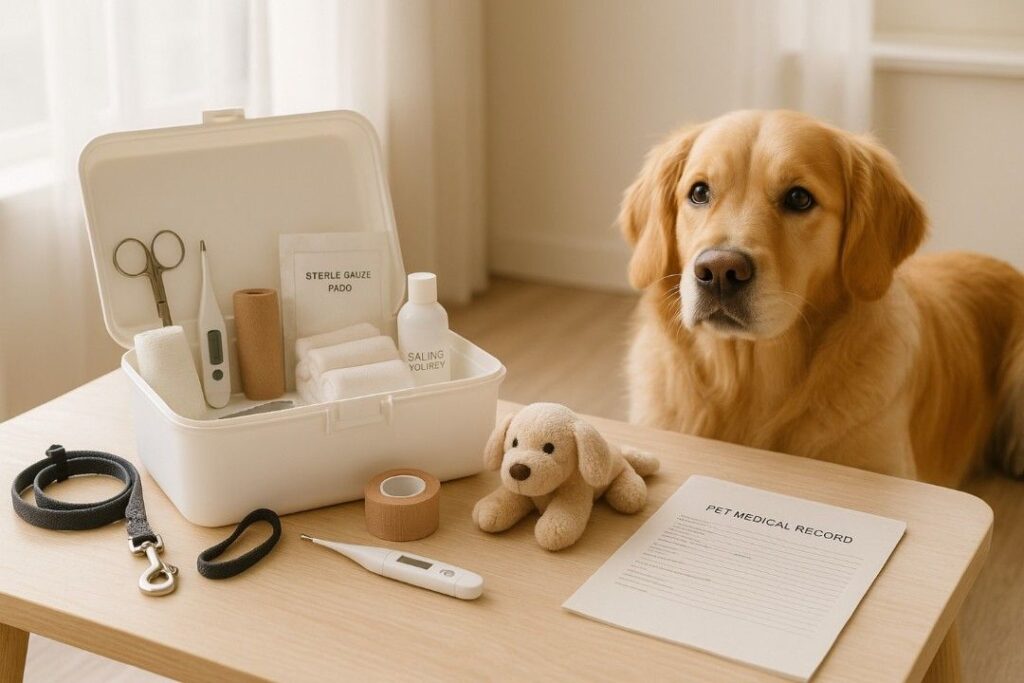
A well-stocked pet first aid kit prepares you for minor injuries or emergencies. Essentials include gauze, non-stick bandages, tweezers, a digital thermometer, saline solution, and pet-safe antiseptic. Add any medications your pet regularly needs, along with a copy of their medical records and your vet’s contact information. Store the kit in an easily accessible location and review its contents regularly. Having a kit ready gives peace of mind and can be crucial in the critical minutes before professional care is available.
10. Window Perches and Cat Shelves
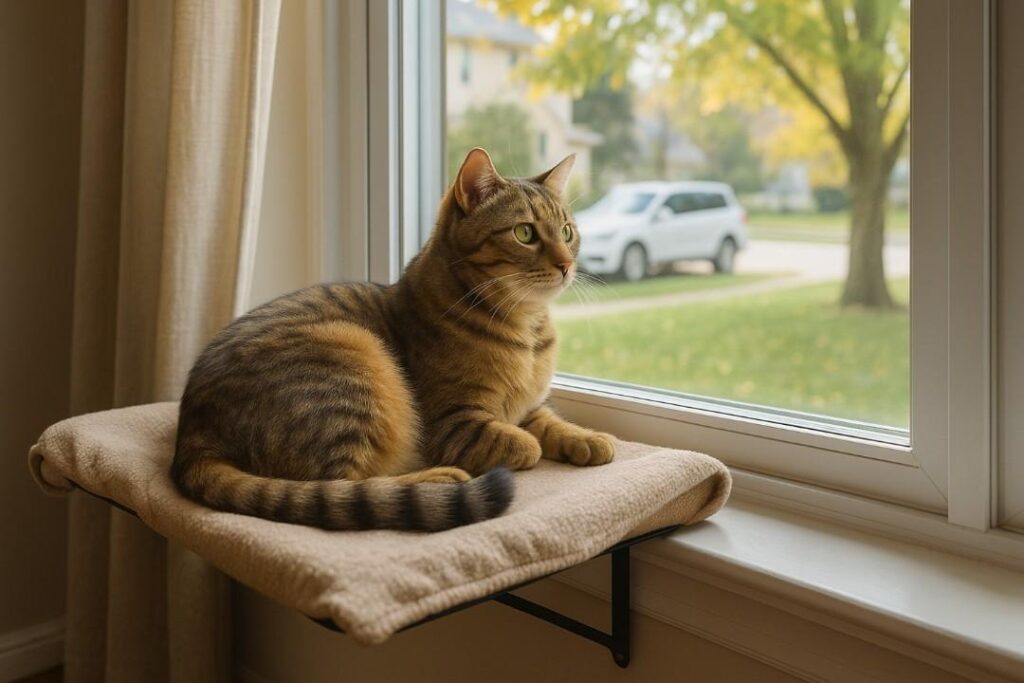
Cats thrive on vertical space and love to observe their surroundings. Installing window perches or sturdy cat shelves lets them bask in sunlight and watch outdoor activity safely. Use secure brackets and soft pads for comfort. These spaces also reduce stress and prevent boredom, especially for indoor cats.
For multi-cat homes, provide multiple perches to avoid territorial disputes. Cat-friendly window hammocks are available, or you can DIY with suction cups and fabric. Regularly check hardware for stability to keep your feline friends safe while they lounge.
11. Organize Toys with Rotating Bins
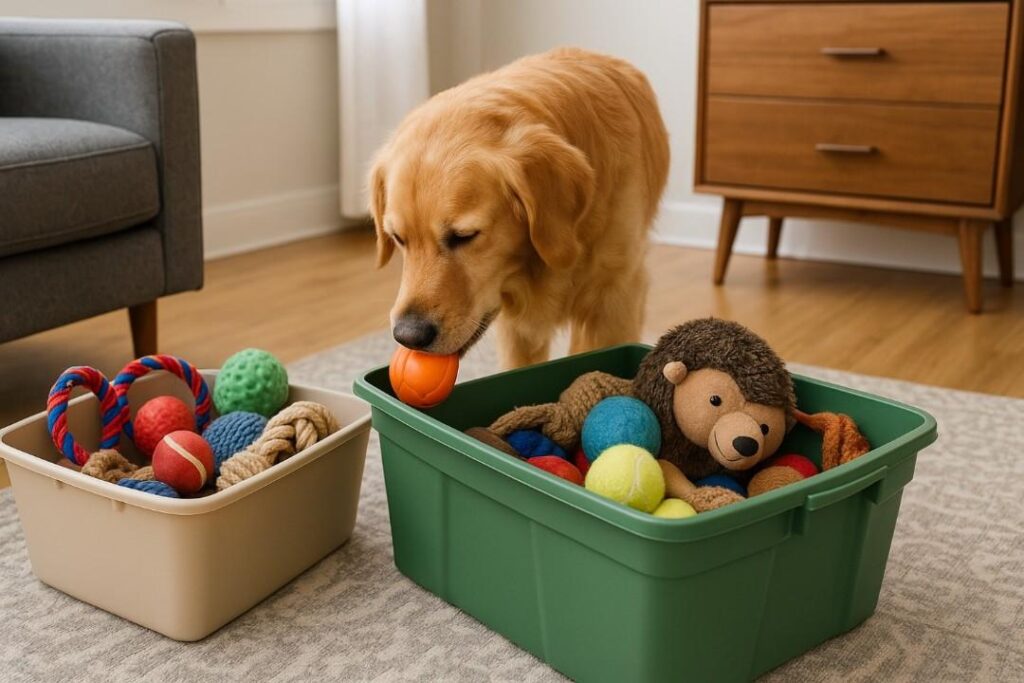
Organizing pet toys in bins or baskets keeps your home tidy and makes it easier to rotate playthings. Rotating toys every few days maintains your pet’s interest and encourages active play. Labeling bins by type—chew toys, fetch items, puzzles—helps you quickly grab the right one for each activity.
For multiple pets, assigning color-coded bins can reduce squabbles over favorites. Regularly inspect toys for wear and discard broken pieces to prevent accidents. This simple hack supports mental stimulation and strengthens your bond through interactive play sessions.
12. DIY Scratching Posts and Pads
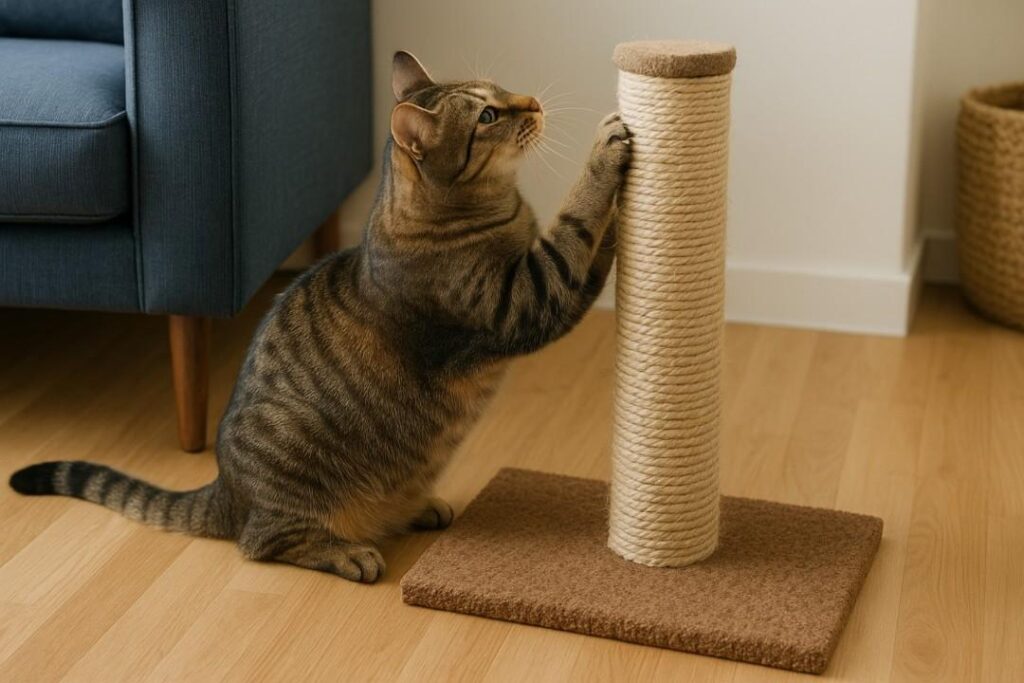
Scratching is a natural behavior for cats, but it can wreak havoc on furniture. DIY scratching posts and pads, made from sisal rope, cardboard, or carpet remnants, offer an enticing alternative. Place scratching posts in high-traffic areas or near favored lounging spots to encourage use.
For added appeal, sprinkle catnip or attach hanging toys. Vertical and horizontal options suit different feline preferences. Providing appropriate outlets for scratching preserves your belongings and supports healthy claws. Regularly check for wear and replace as needed.
13. Portable Travel Kits for Pets
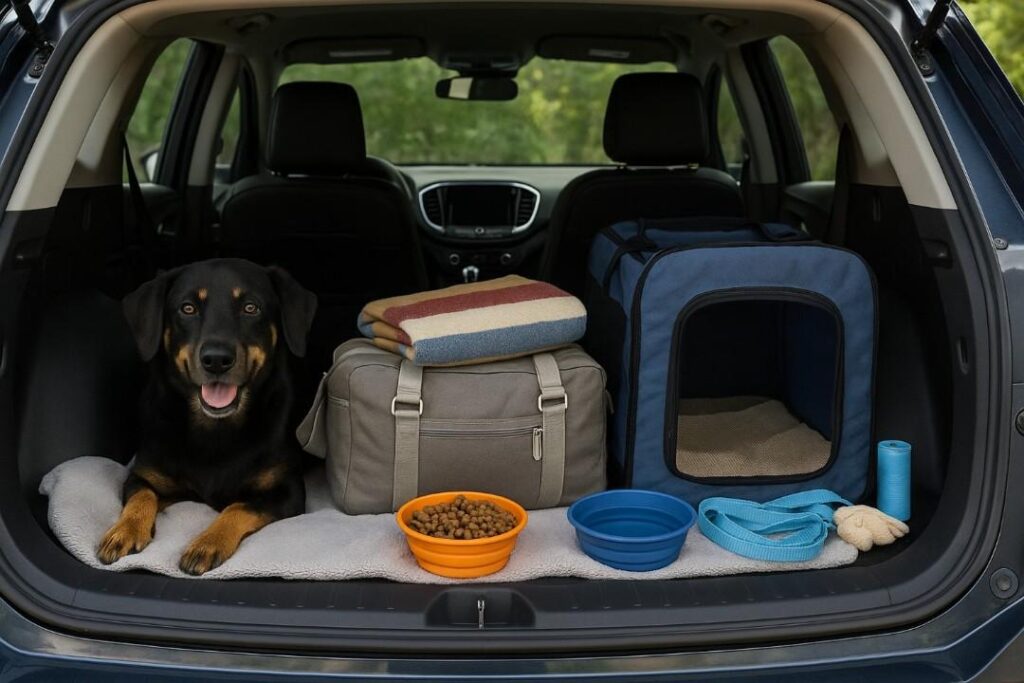
Traveling with pets is less stressful when you prepare a portable kit containing food, water, collapsible bowls, waste bags, and favorite toys. Include comfort items like a blanket or familiar-smelling towel to ease anxiety in new environments.
For longer trips, add a travel litter box for cats or extra leashes for dogs. Keeping medical records and contact details handy ensures readiness for any situation. A well-organized kit makes road trips, vet visits, or overnight stays much smoother for both pets and owners.
14. Set Up Pet Cameras for Peace of Mind

Pet cameras allow owners to monitor their pets remotely, easing separation anxiety and ensuring their safety. Many models feature two-way audio, treat dispensers, and motion alerts, so you can interact with pets while away. Setting up a camera in play areas or near bedding lets you check in on daily routines and quickly spot any issues.
These devices provide valuable insights into your pet’s behavior and help you respond promptly if something seems off. They’re especially helpful for pets with medical conditions or in multi-pet households (source).
15. Establish a Consistent Routine
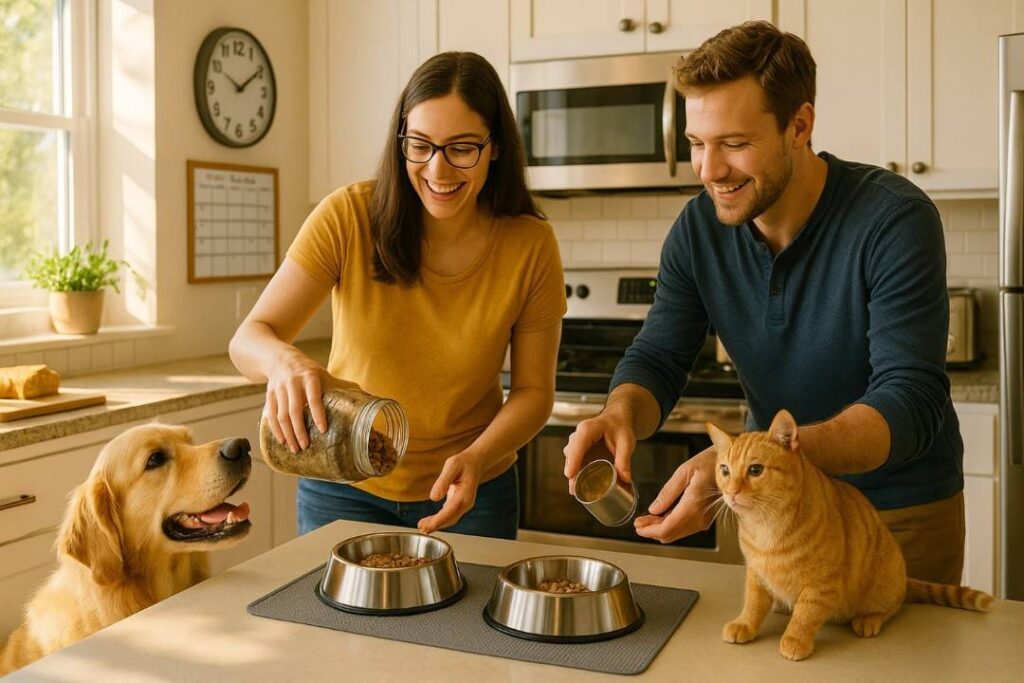
Pets thrive on predictable schedules for feeding, walks, playtime, and rest. Consistency reduces anxiety, supports healthy digestion, and makes training more effective. Posting a schedule on the fridge or using reminder apps can help all family members stay on track.
For multi-pet homes, stagger activities to give each animal attention and prevent resource guarding. Routines are especially beneficial for adopted or rescued pets, helping them adjust to new environments with confidence and trust. Adjust the routine gradually to accommodate changes, such as travel or new additions to the family.

